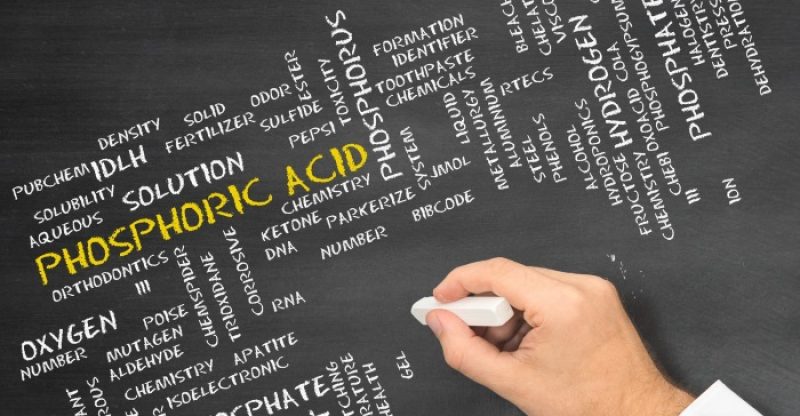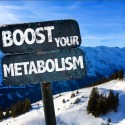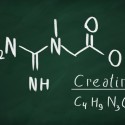6 Phosphoric Acid Dangers and Safer Alternatives
If you’ve ever consumed a soft drink, you have ingested phosphoric acid.
While this compound is also widely used to stop rust from forming, to etch hard surfaces, as a fertilizer, and to clean many of the surfaces in your home, you may be surprised to learn it is also present in nearly all sodas.
Phosphoric acid gives a tangy flavor to foods and drinks, which makes it a common additive in processed items you regularly see in your grocery store.
If it is used that commonly, why should you care?
Our guide helps you understand the dangers of eating or drinking phosphoric acid, including how this corrosive compound can damage your body, interfere with your digestive system, and cause other health problems that are completely avoidable.
Keep reading to learn about the dangers of this common food additive, and how you can avoid consuming phosphoric acid in the future.
Understanding Phosphoric Acid
It can be difficult to understand the difference between phosphorus, phosphate, and phosphoric acid, as these terms are often used interchangeably.
Phosphorus is the basis for all these compounds, so let’s begin there.
Phosphorus is a non-metallic element whose scientific symbol is P.
When this element combines with four molecules of oxygen, as it does naturally, we get phosphate.
Our bodies need phosphate for our cellular structure, and for creating new cells.
Without phosphate, we could not have RNA or DNA.
The three negatively-charged ions of phosphate can combine with three positively-charged atoms of hydrogen, which gives us phosphoric acid.
Phosphoric acid is odorless and clear.
As a mineral acid, it also goes by the name orthophosphoric acid.
The chemical formula for phosphoric acid is three molecules of hydrogen, one molecule of phosphorus, and four molecules of oxygen.
Phosphoric acid comes in two forms – the liquid state most commonly used in soft drinks and other foods, and a crystalline solid state that is corrosive to most materials, including human cells.
Phosphoric acid is obtained by burning elemental phosphorus, then adding water to the byproduct, or by extracting the crystals from rocks with sulfuric acid.
Phosphoric acid can create toxic fumes when it is exposed to organic compounds such as ketones or alcohols.
Phosphate and phosphoric acid, as found in nature, are helpful to humans and necessary for our existence.
It’s when we begin to manipulate phosphorus that we start to see real damage.
As we have learned to control and manipulate these compounds, we have also begun to overconsume them.
In its industrial form, phosphoric acid is used to produce soaps, dyes, fertilizers, polishes, and livestock feed.
It is also used to polish metal.
Phosphoric Acid and Foods
Many people are already aware of the negative health consequences of drinking regular and diet sodas.
Dark-colored carbonated beverages tend to contain more phosphoric acid than lighter ones.
The exception to this rule, in general, is root beer, which naturally contains much less of this harmful compound.
Manufacturers use phosphoric acid to enhance the flavor of soda, as it adds tang.
Phosphoric acid is often added to foods because it brightens flavors, and preserves foods by slowing the growth of pathogens such as mold and bacteria.
Some products that contain dairy also use phosphoric acid to control the food items’ pH level.
Soda is not the only food item to contain phosphoric acid, unfortunately.
Others that often contain it include breakfast bars, nondairy creamer, prepared iced tea drinks, canned coffee drinks, and some meat products that have been “enhanced” with flavors.
Dairy products often contain phosphoric acid because the salts in this compound can alter the pH of and modify the animal proteins found in milk.
Phosphates and phosphoric acid help create a more shelf-stable product, which is why manufacturers choose this additive so frequently.
The most common dairy products in which phosphoric acid is used are nondairy creamers, cottage cheese, buttermilk, and milk.
When you combine baking soda with phosphoric acid salts, you get baking powder, which is used as a leavening agent in baked goods.
Baking powder is often used instead of yeast to leaven bread and other baked treats, so be sure to check the food label to determine if the item contains phosphates.
Phosphoric acid is also commonly used in processed foods like flavored waters, prepared and packaged coffee drinks, processed meats, and cereal or granola bars.
If you purchase meat or poultry, these are often injected or treated with phosphoric acid to prolong the shelf life and enhance the flavor and moisture of the meat.
Common names for these types of meat-enhancing agents include calcium phosphate, dicalcium phosphate, sodium phosphate, or hexametaphosphate.
While many foods naturally contain some amount of phosphorus organically, some foods today also contain high amounts of phosphates and other forms of phosphorus, like phosphoric acid, inorganically, which is when we run into problems.
How to Identify Phosphoric Acid
The food’s label may not always be helpful when trying to identify phosphoric acid.
This compound can go by many other names, including:
- Orthophosphoric acid
- E338
- Pyrophosphoric acid
- Phosphoric(V) acid
- Triphosphoric acid
- Hydrogen phosphate
- o-Phosphoric acid
Because phosphoric acid is so corrosive, you have to wonder how it ever ended up in food products.
This compound can have many negative effects on your body, and knowing what to watch for is key to keeping yourself healthy.
Below are the top dangers that phosphoric acid poses to your health, including reasons why you should reduce or eliminate your consumption of this ingredient.
The Health Dangers of Phosphoric Acid
Those who are exposed to phosphoric acid in industrial settings can experience skin problems, problems breathing or swallowing, digestive disorders, blurred vision, and other eye problems.
These are especially common when phosphoric acid is used in high concentrations.
At lower levels, though, such as when it is used as a food additive, phosphoric acid can still cause a variety of health problems, especially with habitual use.
Phosphoric Acid Decreases Bone Density
Many researchers have confirmed a link between phosphoric acid and decreased bone density.
Drinking soda containing phosphoric acid and caffeine decreases bone mineral density, sometimes called BMD.
This is especially true for women.
In a study examining the effects of phosphoric acid on the spines and hips of over 1,400 women and over 1,100 men, women saw significantly lower bone mineral density measurements in their hips than men.
Those who drank soda daily had 3.7 percent lower BMD measurements than non-soda drinkers.
Drinking one or more soda a day reduced bone density in essential areas of the spine and neck.
Similar results were seen in those who drank diet soda versus regular soda, while those who drank decaffeinated soda regularly saw less bone density loss.
No significant difference was noted for those who drank carbonated water (1).
When bones are still developing, such as during adolescence, consumption of colas can lead to increased risk for bone fractures, especially among girls.
Those girls who report drinking more soda were more likely to suffer one or more bone fractures before the age of 18 (2).
When examining these results, it seems telling that those who drink carbonated beverages without phosphoric acid have a lower bone density than those who drink carbonated beverages with added phosphoric acid.
Phosphoric Acid Damages Your Teeth
Prolonged exposure to acidic foods and beverages can cause dental erosion.
The phosphoric acid in soda is particularly corrosive to tooth enamel, even when consumed infrequently.
Drinking large amounts of soda can damage teeth, especially in young children.
In addition to the high sugar content of many soft drinks, other additives in colas present other health risks, as well.
Phosphoric Acid Can Damage Tissue
It’s no surprise that an acid used to remove rust from metal could damage your body’s tissues.
The same compounds that clean your home and fertilize plants are also contained in foods with phosphoric acid, just in smaller quantities.
In high concentrations, phosphoric acid causes chemical burns to the skin and mucous membranes, so you may want to think twice about eating foods that contain this compound.
Phosphoric acid is known to irritate eyes and airways, cause coughing and wheezing, and lead to many other problems.
Inhaling or touching skin with phosphoric acid is dangerous, so reconsider whether this ingredient is something you want in your foods or beverages.
Phosphoric Acid Decreases Bioavailable Nutrients
By eating a varied diet rich in plants, you can naturally and easily meet your daily phosphorus needs.
Most people today have too much phosphorus in their bodies, rather than being deficient in this essential element.
When you consume beverages like soda and other foods with added phosphorus, you can develop problems.
Too much phosphorus in your diet can lead to a reduction in calcium levels.
When your body is overloaded with phosphorus, this can interfere with your natural ability to use minerals like iron, zinc, and magnesium to perform essential body functions.
Without these and other nutrients, your health will be negatively impacted.
Phosphoric Acid Can Harm Your Kidneys
There is some evidence to suggest that consumption of sodas and other drinks that contain phosphoric acid can lead to the development of kidney stones, chronic kidney disease, and other urinary changes that indicate kidney malfunction.
When your kidneys are functioning at full capacity, they successfully rid your body of any excess phosphorus you may ingest.
We naturally eat the phosphorus that we need in our diets.
When we ingest significantly more than we need, such as when we drink soda, our bodies have a harder time eliminating all the excess phosphorus, which can then build up and create an overload.
When your body is unable to release all this phosphorus, you can develop kidney problems, including kidney stones and chronic kidney disease.
A 2007 study found that those who drank two or more sodas per day were twice as likely to suffer from kidney problems.
This was the same for regular and diet soft drinks (3).
Phosphoric Acid Raises Your Internal pH
When you consume acidic foods and beverages, this can alter the pH of your digestive system, as well as affect other bodily functions.
Phosphoric acid is used to change the pH of foods and drinks, so this change will carry over to your body once you eat or drink those items.
Sodas are some of the most acidic foods you can consume.
The pH of Coca-Cola is anywhere from 2.5 to 4.2, which when compared to a neutral pH of 7 is quite acidic.
Drinking sodas and eating other foods with phosphoric acid can alter your internal pH, and cause problems associated with a higher level of acidity in your body.
How to Eliminate Phosphoric Acid from Your Diet
Soft drinks, especially darker sodas, are the leading culprit for supplying phosphoric acid to your body.
Therefore, eliminating your consumption of these beverages is an excellent first step in cutting back on your exposure to this dangerous compound.
If you still enjoy carbonated drinks, you can drink natural, sparkling water.
You will get the bubbles you crave, as well as helpful minerals, without the sugar, additives, and toxic compounds contained in soda.
Another excellent alternative to soda is kombucha, which is a fermented beverage made from tea.
Kombucha has natural carbonation and is also a great source of probiotics, which are beneficial to many of your body’s systems.
Other healthy beverages include water, coconut water, seltzer water, ginger ale, and herbal tea.
Precautions
Phosphorus is an element that is found in plants and animals, and when we consume organic forms of this element, our bodies receive the necessary building blocks for good health.
When we consume phosphoric acid, though, this inorganic form of phosphorus can negatively impact your health.
Phosphoric acid is used as a preservative in some foods to prevent spoiling, and it is used in larger quantities in soda to add flavor.
Reading labels will help you identify previously unknown sources of phosphoric acid in your diet, including some dairy products.
The high concentration of phosphoric acid in sodas can lead to significant problems, including diminished bone density, damage to tissues and cells, corrosion to tooth enamel, kidney problems, deficiencies in essential nutrients, and imbalanced pH within your body.
Instead of drinking colas and dark-colored sodas, you should drink sparkling water, plain water, or other beverages that do not contain phosphoric acid.
Eliminating soda is an excellent first step in reducing your intake of phosphorus.
FDA Compliance
The information on this website has not been evaluated by the Food & Drug Administration or any other medical body. We do not aim to diagnose, treat, cure or prevent any illness or disease. Information is shared for educational purposes only. You must consult your doctor before acting on any content on this website, especially if you are pregnant, nursing, taking medication, or have a medical condition.
HOW WOULD YOU RATE THIS ARTICLE?






